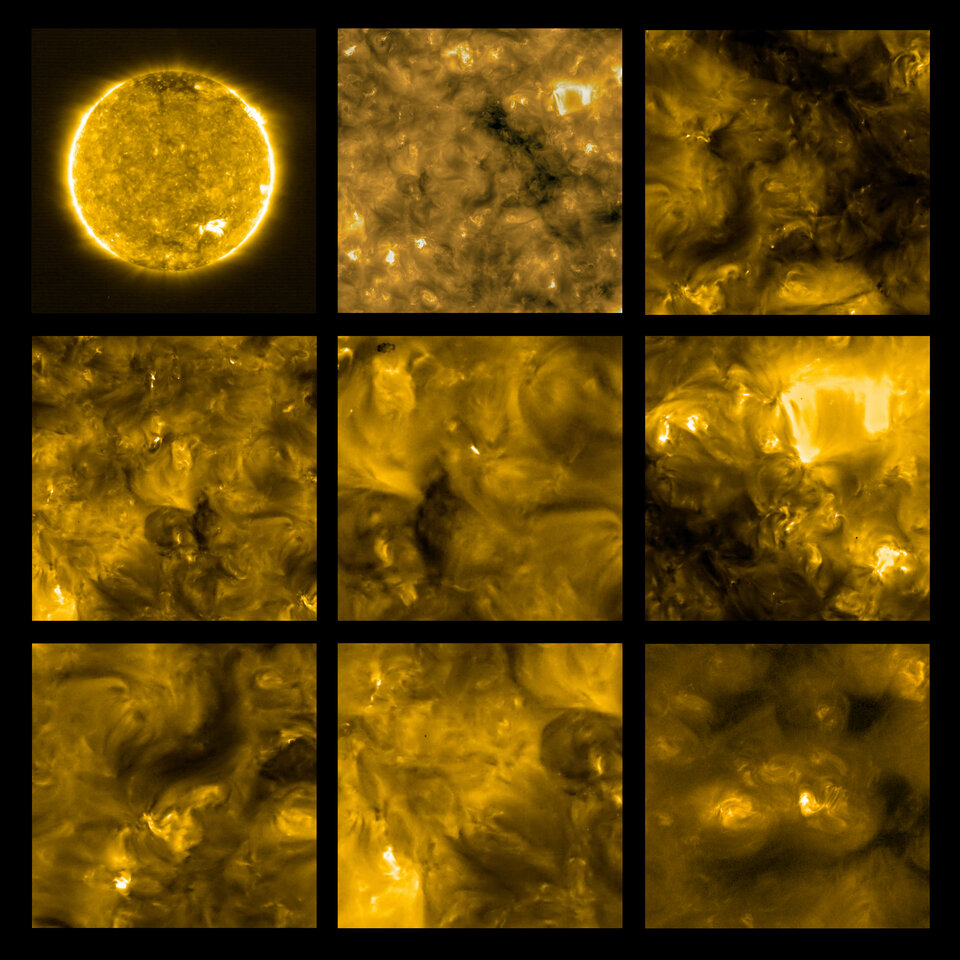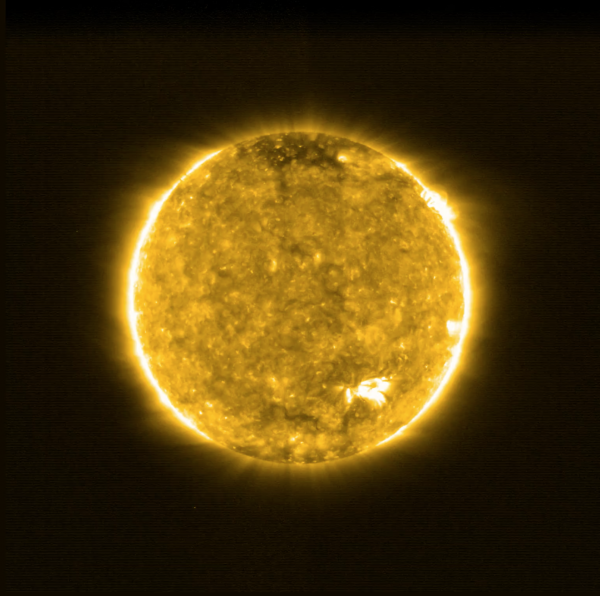The first images from Solar Orbiter, a new Sun-observing mission by ESA and NASA, have revealed omnipresent miniature solar flares, dubbed ‘campfires’, near the surface of our closest star.
According to the scientists behind the mission, seeing phenomena that were not observable in detail before hints at the enormous potential of Solar Orbiter, which has only just finished its early phase of technical verification known as commissioning.
“These are only the first images and we can already see interesting new phenomena,” says Daniel Müller, ESA’s Solar Orbiter Project Scientist. “We didn’t really expect such great results right from the start. We can also see how our ten scientific instruments complement each other, providing a holistic picture of the Sun and the surrounding environment.”
Solar Orbiter, launched on 10 February 2020, carries six remote-sensing instruments, or telescopes, that image the Sun and its surroundings, and four in situ instruments that monitor the environment around the spacecraft. By comparing the data from both sets of instruments, scientists will get insights into the generation of the solar wind, the stream of charged particles from the Sun that influences the entire Solar System.
The unique aspect of the Solar Orbiter mission is that no other spacecraft has been able to take images of the Sun’s surface from a closer distance.
Closest images of the Sun reveal new phenomena

The campfires shown in the first image set were captured by the Extreme Ultraviolet Imager (EUI) from Solar Orbiter’s first perihelion, the point in its elliptical orbit closest to the Sun. At that time, the spacecraft was only 77 million km away from the Sun, about half the distance between Earth and the star.
“The campfires are little relatives of the solar flares that we can observe from Earth, million or billion times smaller,” says David Berghmans of the Royal Observatory of Belgium (ROB), Principal Investigator of the EUI instrument, which takes high-resolution images of the lower layers of the Sun’s atmosphere, known as the solar corona. “The Sun might look quiet at the first glance, but when we look in detail, we can see those miniature flares everywhere we look.”
The scientists do not know yet whether the campfires are just tiny versions of big flares, or whether they are driven by different mechanisms. There are, however, already theories that these miniature flares could be contributing to one of the most mysterious phenomena on the Sun, the coronal heating.
Solar Orbiter is a space mission of international collaboration between ESA and NASA. Nineteen ESA Member States (Austria, Belgium, the Czech Republic, Denmark, Finland, France, Germany, Greece, Italy, Ireland, Luxembourg, the Netherlands, Norway, Poland, Portugal Spain, Sweden, Switzerland, and the United Kingdom), as well as NASA, contributed to the science payload and/or the spacecraft. The satellite was built by prime contractor Airbus Defence and Space in the UK.



















